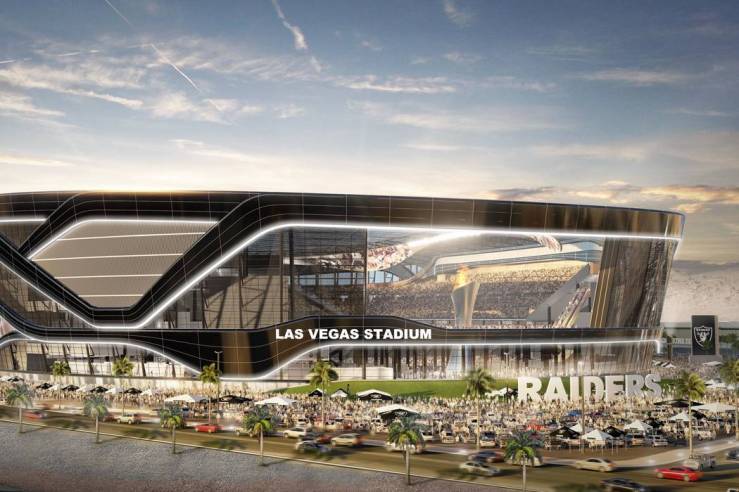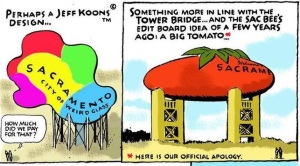The NFL’s last domino for the time being has fallen. After the Chargers and Rams left St Louis and San Diego in favor of sharing the nation’s second largest media market and with the City of Oakland having clearly moved on (Mount Davis’ ROI proved pathetic after its PSL financing mechanism fell apart), the Raiders are now moving to Las Vegas. Each of these franchises left countless passionate, loyal fans behind for the promised riches of a larger market and a new stadium.

I have been a pretty big sports fan for most of my life, but today I worry about the next generation of sports fans and the games themselves. At the end of the day, what are we rooting for? The players increasingly come and go. The owners are just some random billionaires. What’s left? The laundry? Personally, I root for the teams that I root for (Oakland Athletics, Golden State Warriors & San Francisco 49ers) largely out of the nostalgic connection to my childhood. I cannot wait to take Henry to his first Sacramento Kings game and expect I will develop more of a connection to the team as they become a part of Henry’s childhood.
I never cared that the Coliseum was looked down on by the league or minded sitting in the nose bleed seats. I have fond memories of sitting huddled under a blanket at chilly April night games with my family. I never cared that the Run T-M-C and later 90s Warriors teams were terrible defensively, I just enjoyed how much fun it was to watch all those points being scored. The first NBA game I ever went to saw the Warriors and Nuggets combine for 320 points . What kid wouldn’t love that?
I have struggled to maintain my connection over the years as the A’s have continuously threatened to move away (made worse by my childhood hero facing steroidal disgrace). Would I still root for them? Would the laundry’s connection to my childhood be enough, even if they were no longer from my hometown? Probably not. So should they stay there perpetually despite the MLB choosing to relegate them to small-market status because of favorable territorial rights bestowed on the Giants? That’s a harder question to answer. The Las Vegas Raiders answered that forcefully, breaking the hearts of many longtime, loyal Oakland fans. The The Los Angeles Chargers and Rams broke their San Diego and St. Louis fans’ hearts just as callously over the last year.
Should we blame them, given the economics of the situation?
That’s a tough question to answer. But I will answer it this way: Professional sports, as a business, has always been built on the loyalty and irrational exuberance of a prideful, local fan base. That was a good business for many, many decades. It made a lot of people a lot of money, while bringing pride, joy and sometimes the most beautiful kind of suffering to their communities. Over the last two decades, though, professional sports have gotten a major taste of national TV dollars. With that taste, they have become addicted and are shifting their business model to ensure they get more and more. Loyalty matters less because they are cashing in when you are tuning in, no matter which team you root for. But there are two problems with that model (aside from any ethical questions):
First, the centralized national TV model is dying and ESPN is a big part of what is driving consumers to cut the cord. The technology on this is accelerating and the current model is unlikely to survive to the end of the next decade — it might not even survive this decade. Once we’ve shifted to an a la carte system, the NFL, etc will either have to put up a serious financial barrier to entry for fans, in order to generate TV revenue, or else figure something else out.
Second, if you cut the relationship between communities and their sports teams, you are going to stunt the development of future fans. My friends in Oakland and San Diego are not likely to teach their kids to love the Raiders or Chargers. Most of them will probably largely just forget the NFL exists. If you live in San Diego and can go to the Beach in November, why would you spend that time in front of a TV? I love football, but I love football because of the 49ers. If you cut off that relationship, football is meaningless to me. I couldn’t care less about college football. Why? It’s the same sport, that doesn’t make sense. Simple, I went to non-BCS colleges, so I have never developed a connection to and really could not care less how it plays out. If the A’s move from Oakland, Henry will never watch their games or likely any others. He will never grow up with a relationship to Major League Baseball and he’ll find something else to do with his time and money. He may not even grow up with a relationship to Minor League Baseball, given the Rivercats own lack of loyalty. I’m not sure if he’ll be better or worse off because of it, but I’m pretty sure MLB will lose out just like I’m pretty sure the NFL is losing out by alienating the 17th and 20th largest metropolitan areas in the country. But hey, Mark Davis, Art Spanos, and every other NFL owner, just got a little richer, so I guess the economics work out in the short run.
At least one NFL owner, Stephen Ross of the Miami Dolphins, seems to get it, in casting the lone ‘No’ vote, he said:
My position today was that we, as owners, and as a League, owe it to the fans to do everything we can to stay in the communities that have supported us until all options have been exhausted. I want to wish Mark Davis and the Raiders organization the best in Las Vegas.
As he so often does, Jack Ohman succinctly cut to the heart of the issue:

I have said it before and I will probably say it again, it is much too soon to meaningfully claim Sacramento’s new arena to be a financial success or failure. That said, I am glad that with the Kings’ new home locked in, my son will not have his little heart broken by the Kings leaving his hometown for at least the next several decades.
Of course, any readers now yearning for a simpler time in sports may wish to attend the State Library’s upcoming event, “Sacramento Baseball from the 1870s to the River Cats” on April 5th.






 One would hope that Sacramento could be both pro-tree and pro-fork. Celebrating our agricultural and culinary heritage should not have to come at the expense of our urban forest. One wonders if, with a bit more artistic/desktop publishing creativity, both of these identities couldn’t be celebrated side-by-side. Better yet, give the trees back their water tower and create something new to celebrate our beloved tomatoes. Perhaps our city could take inspiration from
One would hope that Sacramento could be both pro-tree and pro-fork. Celebrating our agricultural and culinary heritage should not have to come at the expense of our urban forest. One wonders if, with a bit more artistic/desktop publishing creativity, both of these identities couldn’t be celebrated side-by-side. Better yet, give the trees back their water tower and create something new to celebrate our beloved tomatoes. Perhaps our city could take inspiration from 